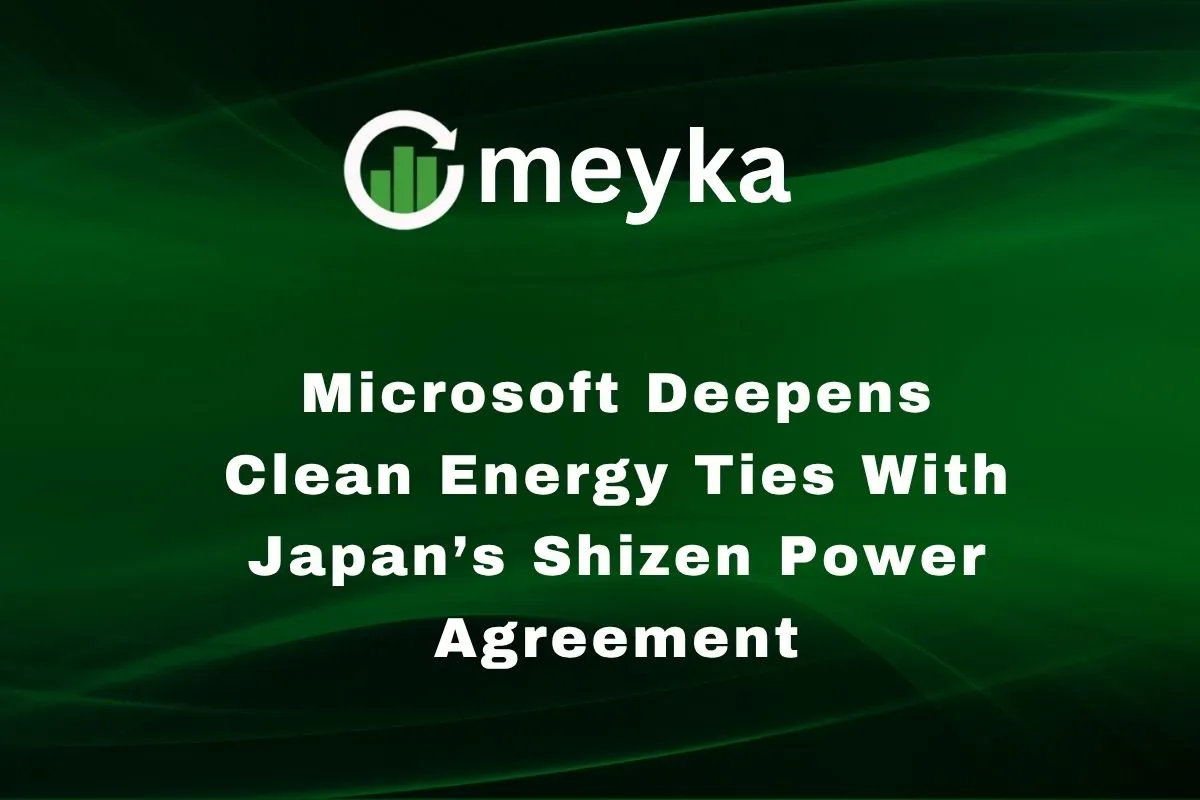Microsoft Deepens Clean Energy Ties With Japan’s Shizen Power Agreement
Clean energy is now central to how tech giants build for the future. Microsoft has taken a bold step in Japan by expanding a renewable energy deal with Shizen Energy. The company just signed three new 20-year solar power purchase agreements (PPAs) with Shizen.
We see that big tech firms no longer just talk about climate goals; they act on them. This agreement marks a fresh push to lock in clean power for Microsoft’s operations in Japan. It also aligns with Japan’s ambitions to reach carbon neutrality by 2050.
Background: Microsoft’s Climate and Energy Commitments
Microsoft has long promised to lead in sustainability. The company aims to become carbon negative by 2030, meaning it plans to remove more CO₂ than it emits. They also plan to power all their operations with renewable energy by 2025.
To reach these goals, Microsoft signs long-term energy deals across regions. These deals help them reduce reliance on fossil fuels and stabilize energy supply costs. Over the last few years, Microsoft has inked renewable energy deals across Asia, Europe, and the Americas.
Japan is among the markets where Microsoft wants a local clean energy supply. This move strengthens its promise to serve its data centers, cloud services, and customers with low-carbon power.
Who Is Shizen Power (Shizen Energy)?
Shizen Energy (or Shizen Power) is a Japanese renewable energy company. It develops solar, wind, and hybrid energy projects in Japan and abroad. Since its founding in 2011 (after the Fukushima disaster), Shizen has grown into a key player in Japan’s energy transition.
By now, Shizen has developed over 1.2 gigawatts of renewable capacity globally. The firm works on project development, financing, operations, and maintenance. For Microsoft, Shizen is not just a contractor, but a strategic partner in decarbonizing energy supply in Japan.
Details of the New Partnership
Here’s what we know about the agreement:
- Microsoft and Shizen signed three new PPAs, each lasting 20 years.
- Combined capacity of these PPAs is 100 megawatts (MW), when added to previous deals.
- Projects are already finalized financially. One is already in operation, while the other two are under construction.
- The solar plants are located in the Kyushu and Chugoku regions of western Japan.
- Shizen Operations Inc. will handle operations and maintenance.
This is not Microsoft’s first PPA in Japan. They had a prior long-term deal with Shizen in 2023. Now, these new deals deepen that energy relationship.
Why Japan Is a Strategic Market
Japan is pushing hard on clean energy. The government targets net zero carbon emissions by 2050. To get there, renewable power must scale. But Japan faces hurdles like limited land, challenging terrain, and dependency on imported energy.
For Microsoft, Japan is a growing base of operations, data centers, cloud services, AI, and more. Digital demand is steep and power-hungry. So securing clean energy locally helps Microsoft manage cost, reliability, and sustainability.
Also, corporate PPAs are becoming more common in Japan. Microsoft’s new deals show confidence in Japan’s renewable energy market. Over time, such large agreements can help spur more investment in Japan’s green infrastructure.
Impacts on Microsoft’s Operations
This agreement has several direct effects:
- The clean power will help run Microsoft’s data centers, cloud infrastructure, and AI systems in Japan.
- It reduces Microsoft’s carbon footprint (especially Scope 2 emissions from power).
- It gives more predictable energy costs over 20 years.
- It supports Microsoft’s global target of going carbon negative by 2030.
By securing local clean energy, Microsoft shields itself from fuel price volatility and energy supply risks. We can see that deals like this help sustain digital growth responsibly.
Economic and Environmental Benefits
The partnership offers many benefits beyond Microsoft:
- It will create jobs in Japan, in engineering, construction, and maintenance.
- It supports local supply chains in solar technology, grid linking, and energy services.
- It accelerates Japan’s transition away from fossil fuels.
- It sends a signal to investors and other companies: renewable PPAs are viable in Japan.
Environmentally, every megawatt of solar power added cuts carbon emissions, improves air quality, and reduces reliance on imported fossil fuels. It also helps Japan diversify its energy mix.
Broader Implications for Asia-Pacific
Microsoft’s move may spur similar partnerships across Asia-Pacific. We are already seeing rising interest in corporate PPAs throughout the region. Tech firms in India, Southeast Asia, and Australia will want long-term, clean, predictable energy. Microsoft’s model could serve as a blueprint. Local renewable developers may also see larger-scale project demand. In short, this deal is not just about Japan; it reflects how the tech-energy nexus is reshaping clean power in Asia.
Challenges and Considerations
Such partnerships do face obstacles:
- Grid integration: connecting new solar plants to aging grids can be complex.
- Intermittency: Solar power fluctuates with the weather, so backup or storage is needed.
- Land & resource constraints: Japan has spatial limits for large renewable projects.
- Regulatory and permitting delays: green energy laws and incentives vary by region.
- Financing risk: a large capital investment is needed, and returns depend on a stable policy.
We must recognize these challenges and ensure smart project design, storage solutions, and stakeholder collaboration.
Conclusion
Microsoft’s expanded clean-power deal with Shizen Energy is a milestone. By signing three new 20-year solar PPAs totaling 100 MW, Microsoft deepens its commitment to renewable energy in Japan. This move supports both Microsoft’s global climate goals and Japan’s path to carbon neutrality. It shows how global tech firms and local energy leaders can team up to build a cleaner digital future. As the Asia-Pacific becomes a hub for clean energy innovation, deals like this show the powerful role that corporations can play in accelerating energy transformation.
FAQS:
Japan aims to cut pollution and use more renewable power, like solar and wind. The government plans to reach net-zero emissions by 2050 with steady investment and updated energy rules.
Japan is slowly moving away from fossil fuels toward cleaner power sources. It invests in renewables, restarts some nuclear plants, and encourages companies to use low-carbon technology and local solutions.
Japan still imports most of its energy, which creates risks. The country is working to boost renewable power, improve storage, and reduce its dependence on foreign fuel for better security.
Disclaimer:
This content is for informational purposes only and is not financial advice. Always conduct your research.






